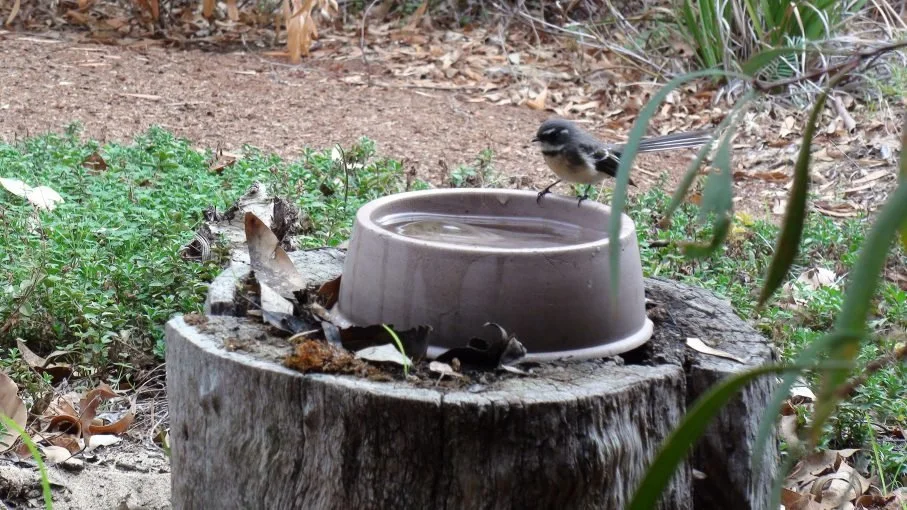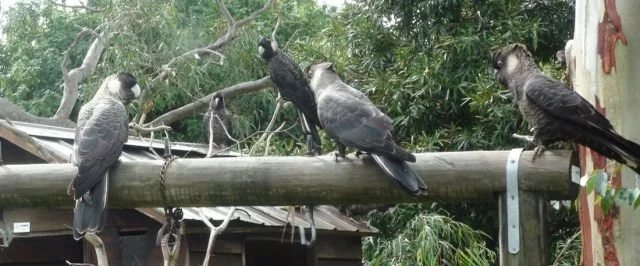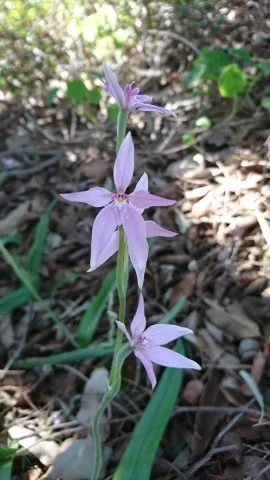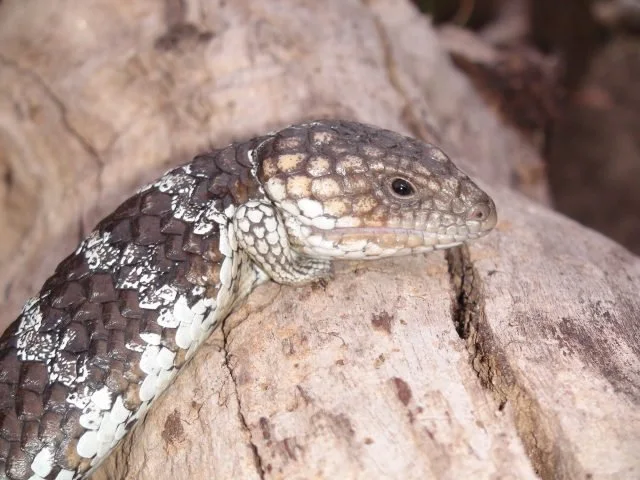The endangered Carnaby’s Black-Cockatoos enjoy the mature Marris and the abundance of native plants and water that Mandy and Mike provide in their garden
Local sustainability superstars, Mandy and Mike Bamford, guide us through their stunning ReWild garden full of gorgeous greenery and wonderful wildflowers.
Mandy and Mike Bamford turned their backyard from a sandy paddock into a beautiful biodiverse, ReWild wonderland over the last 34 years. Their astonishing efforts and persistence in weeding, planting and growing plants from seed has paid off, and now their garden is always buzzing with activity from native wildlife and their outdoor space provides them with endless enjoyment.
Starting from scratch
Mandy and Mike moved into their 2,116m2 block of land in Kingsley 34 years ago. When they purchased the block, it was a large, barren paddock with nothing but weeds thriving in yellow builder’s sand.
Despite the extent of work ahead of them, they saw the potential of the space and knew that with a bit of work, their garden would grow into a biodiverse, green oasis for their family that would soon provide habitat for native fauna for years to come.
Mandy and Mike had always been fascinated by native animals and plants. The opportunity to create their garden from scratch was an exciting dream that they got started on right away. Their goal was to create a garden for wildlife so that they could enjoy seeing spectacular native animals every day in their own backyard, with the additional benefits of a cooler home and fresh air for their family.
ReWild gardening
‘ReWilding’ is a global movement aiming to restore the natural environment through planting native species, with the aim of providing habitat for native fauna, greener cities and mitigation of climate change.
ReWild Perth is about creating environments that support native wildlife we have displaced through land clearing, in our own backyards and gardens. There are limited untouched green spaces remaining in the Perth Metropolitan area, but with a community effort we can all start to restore the environment and cohabit with native species.
Mandy and Mike signed up to the ReWild program to continue to create their beautiful garden and outdoor space. Registering their ReWild garden gave them access to a garden action plan, which helped them set goals for their garden and track their progress. They could also view the collective impact they were making on the suburb progress map.
ReWild resources and plant lists are perfect for heading to the nursery to find out which plants are native, and how each of your plants can support wildlife in your garden. You can select plants that attract a certain species and find out how to create the perfect habitat garden.
Natives for nature
After a few years of planting seedlings, growing plants from seed and swapping plants with friends and family, Mandy and Mike could start to sit back, watch their garden grow and enjoy the fruits of their labour.
They have watched their Marri trees grow from seedlings into large trees that are now providing a bounty of food for Carnaby’s Black Cockatoos! The Marri trees are often full of honeyeaters, Striated Pardalotes and insects that feed, nest and shelter in them.
There are seven Marri trees on Mandy and Mike’s property, which provide a wonderfully shaded canopy on their home and keep them cool throughout the summer months. Tree canopy is incredibly important for mitigating the urban heat island effect, which we have been experiencing quite intensely this past summer.
“When the maximum for Perth was 43° degrees a few weeks ago (February 2024), our thermometer was showing only 39° degrees. It was very pleasant sitting under our Marri trees with a cup of tea, watching the wildlife coming to our garden for shade. Imagine how much cooler it would be if every spare space in our suburbs had trees!”
The Marri trees aren’t the only flora species buzzing with activity in their garden. Some species pop up by themselves, such as the three orchid species that flower happily every year. They support a myriad of insects, such as the Peacock Spider and the beautiful Blue-banded Bee!
Creating homes and habitat
Not only do Mandy and Mike provide habitat for wildlife by planting the native plants that animals love, but they also provide built habitat options, such as ‘lizard lounges’, insect hotels, baths, ponds and water bowls for birds and ground marsupials. They also install nest boxes that replicate hollows and crevices for birds and bats.
If you walk around the garden, you will see piles of leaf litter that have been left out for invertebrates, fungi and microorganisms to keep their soil healthy. The leaf litter also acts as a natural mulch on the ground. Small areas of sand between paving bricks provide nests for Blue-banded Bees, and the many groundcovers and shrubs provide protection for many different animals as well as acting as a living mulch helping to retain soil moisture.
The diversity in both natural and artificial habitat options, alongside ponds and wet areas provides the perfect home for many native species. Mandy and Mike have successfully brought the bushland to their backyard!
No fuss natives
Mandy and Mike don’t water their garden much at all. They only need to water their veggies, herbs and fruit trees, and a small patch of lawn they have where their dog plays outside.
“Newly planted seedlings need watering throughout the first summer but mostly the garden doesn’t need much water,” Mandy said, “Only light hand-watering needs to be done during the summer.”
While Mandy and Mike enjoy gardening and choose to spend their time in the garden, it’s not necessary for a ReWild garden. Once their garden became established, their native plants don’t require much upkeep. The most that needs to be done is a light prune of some of the larger shrubs, and some Marri leaves need to be swept off the paths and put into the compost.
A win for water efficiency and conservation
This garden is waterwise as well as being wildlife friendly, it allows the rain to water it and is irrigation free! In addition, beautiful biodiverse gardens beaming with plants help water infiltration preventing stormwater run-off, allowing deep soaking of the soil. The plant cover provides a cooling effect and keeps the soil protected in the hot summer months, and it can even help reduce temperatures inside Mike and Mandy’s home. Together these water and energy savings mean less money is going on bills!
This garden is also well positioned to survive in Perth’s forecast drying climate with additional hot days.
Easy to maintain and a beautiful garden
Who said you couldn’t have it all? Waterwise and biodiverse gardens can be just as beautiful as any other garden full of exotic water hungry plants, and they better support our local wildlife. Natives can be used to design all sorts of gardens now – from Mediterranean, cottage gardens to coastal designs, natives are versatile and resilient as well as adapted to our climate!
Mike and Mandy say maintenance of the garden is less than what it would have been if they had lawn, and it’s something they enjoy doing. Whether it’s a few hours of weeding a month, light pruning or planting new plants in winter, they love spending time in their biodiverse oasis.
Join the ReWilding Revolution!
If you want to start a ReWild garden, Mandy and Mike’s advice is to enjoy it and experiment!
Always ask for advice from other rewilding gardeners, check out social media rewild or gardening groups, and get your resources from ReWild Perth, NatureLink Perth, Birdlife Australia, Gardening Australia, Wildflower Society and Water Corporation.
The City also has some great resources to help you on your rewilding journey. Our Sustainable gardening page has a soils map so you can find out your soil type and discover the right native plants for your garden. You can also check our Online maps resource to see if you live in a ‘Regional Ecological Linkage’ area by clicking ‘Regional Ecological Linkage’ on the lefthand menu and find your address. You can apply for a free street tree. Our recent Waterwise Verge Garden Competition winner also has some great tips for waterwise native gardening.
“It’s great knowing that we are helping to create a stepping stone for wildlife through our suburb. It has been exciting to notice other people in our street gradually adding a few native plants to their verges and gardens.
There is a rewilding revolution taking place!”
Together we can all make small changes to take charge of our space and ‘bring nature home’ to where it used to be.




